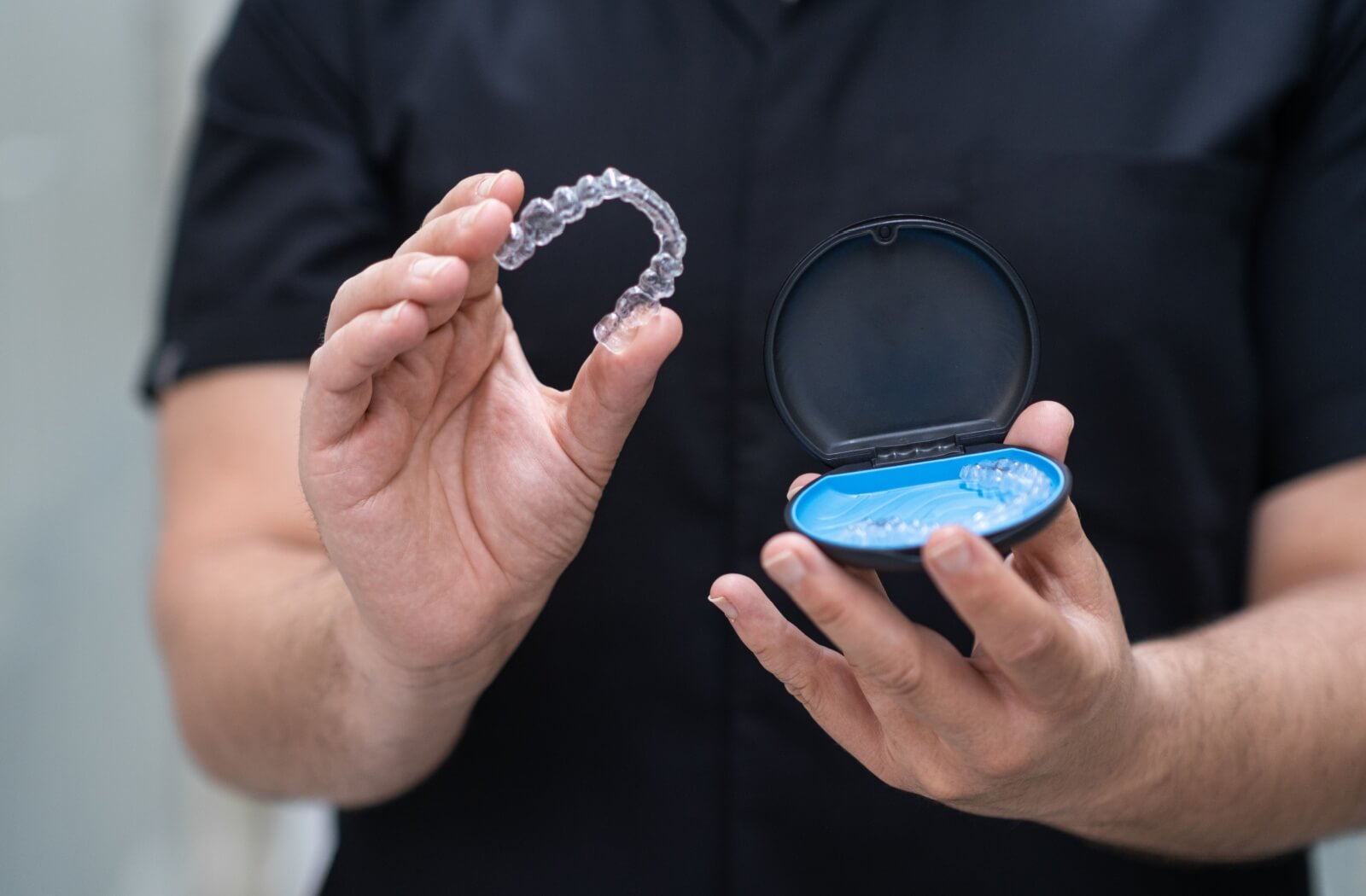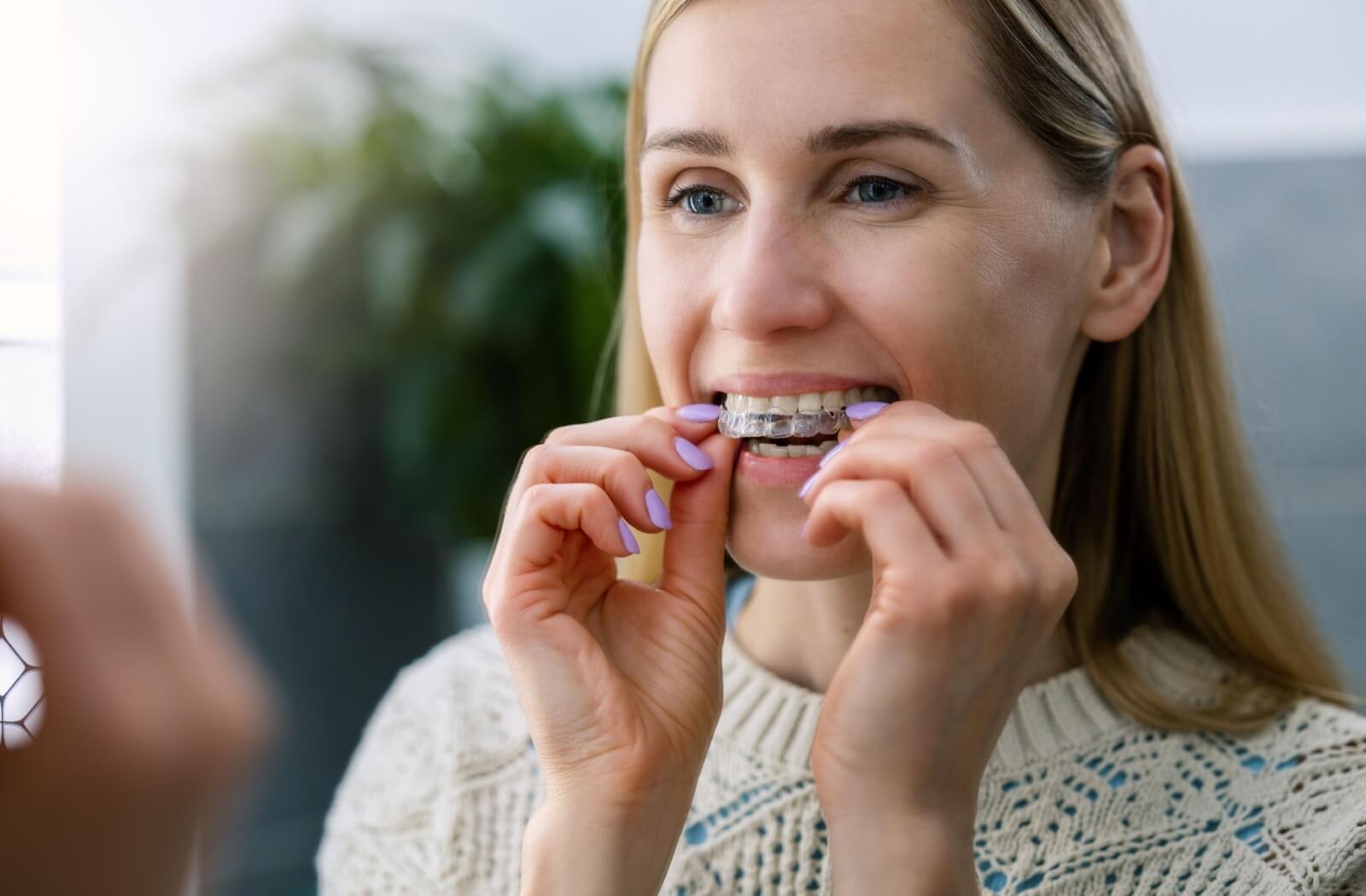How Long Do Invisalign Aligners Take to Work?
June 6, 2025

If you've been thinking about straightening your teeth with a subtle and convenient option, Invisalign may have crossed your radar. For teens and adults alike, these clear aligners are one of the most popular orthodontic treatments for people looking to improve their smile without the hassle of traditional braces.
But when you begin exploring Invisalign, one of the first questions you're likely to ask is how long the process will take.
Most Invisalign treatments take anywhere from 6 months to 2 years, depending on factors such as the complexity of your case and how closely you stick to your dentist's instructions.
What You Should Know About Invisalign
Invisalign is a practically invisible, flexible alternative to traditional braces. It's designed to straighten teeth using clear aligners. These aligners are custom-made for your teeth and gradually shift them into the desired position.
The process is simple and user-friendly:
- Wear your aligners for 20–22 hours every day.
- Switch to a new set of aligners every 1–2 weeks, as directed by your dentist.
- Remove them only to eat, drink, brush, and floss.
Thanks to its removable and virtually undetectable design, Invisalign appeals to those seeking a more discreet approach to orthodontics, without the metal brackets and wires often associated with braces.
How Long Does Invisalign Take?
When it comes to Invisalign, the duration of treatment isn't one-size-fits-all. Factors such as the condition of your teeth and your commitment to wearing your aligners play a significant role.
The makers of Invisalign suggest that you may begin noticing results in as little as 6 months. However, real-world studies show that the average treatment time is closer to 22.8 months. For some people, the treatment may be shorter than that, while others with more complex dental concerns could take longer and might even need to transition to traditional braces.
To get a more accurate estimate of how long Invisalign will take for you, consult your dentist. They'll assess your teeth and work with you on a personalized plan to achieve the best result in an efficient timeframe.
Factors That Impact Invisalign Treatment Time
Your Invisalign timeline will depend on various factors, some of which you can influence directly. Here's how different aspects of your treatment might affect the timeline.
Complexity of Dental Concerns
Your starting point matters. If your goal is to fix mild cosmetic issues like slightly spaced or misaligned teeth, you may finish your treatment faster than someone with severe crowding, significant gaps, or bite misalignment.
For complex cases where Invisalign isn't as effective, traditional braces may offer a better solution. Your dentist can help determine the best option for your specific concerns.
Age & Bone Flexibility
Age can play an interesting role in how quickly Invisalign works. For younger patients, such as teens whose jaws and facial bones are still growing, teeth tend to shift more easily. On the other hand, studies suggest that adults aged 35–50 may also have faster tooth movement compared to other ages.
No matter your age, orthodontic treatment is possible and effective—but the expected timeline may vary.

Compliance with Wearing Aligners
Consistency is key to achieving results with Invisalign. Wearing your aligners exactly as instructed by your dentist (20–22 hours daily) is essential for steady progress.
Failure to follow the recommended wear time could extend the duration of your treatment. Keep up with regular dental appointments, as you'll need to change out for new aligners every 1–2 weeks to stay on track and protect your progress.
Need for Refinements
Sometimes, additional adjustments, called refinements, are required along the way. This happens when your teeth don't move exactly as predicted and extra aligners are needed to fine-tune your results. While this can extend your treatment time slightly, it helps you end up with your ideal smile.
Maximizing Your Invisalign Journey
Want to help your Invisalign treatment stay on schedule? Here are practical tips to keep in mind:
- Wear your aligners consistently for the recommended 20–22 hours a day.
- Follow your dentist's instructions closely and switch to the next aligner set on time.
- Store your aligners in their protective case when not in use to prevent damage.
- Avoid cleaning them with hot water, as it can warp the aligners.
- Brush your teeth after meals to remove food particles before reinserting the aligners.
By following these steps, you can take control of your treatment and ensure the best possible results.
Key Differences Between Invisalign & Braces
If you're comparing Invisalign and traditional braces, it's worth noting their distinct advantages.
Traditional braces are a tried-and-true option for correcting complex dental issues. They tend to achieve results efficiently in cases where Invisalign may not be suitable, such as severe bite alignment issues or significant overcrowding.
However, Invisalign offers significant advantages for those seeking a discreet and flexible option. Its clear aligners blend seamlessly, making them less noticeable in professional or social settings. Plus, their removable design makes it easier to maintain excellent oral hygiene throughout your treatment.
The choice between Invisalign and braces ultimately comes down to your goals, orthodontic needs, and lifestyle.
Start Your Invisalign Journey Today
A straighter, more confident smile is within reach, and Invisalign provides an effective, nearly invisible path to get there. Whether you're aiming for a subtle shift or a complete transformation, Invisalign offers a customizable treatment plan that suits your unique needs.
Not sure about your next step? Westwood Dental is here to help! Contact us today to book your Invisalign consultation. Our friendly team is ready to guide you on your path to a healthier, more radiant smile. Your perfect smile could be closer than you think. Book your appointment today to take the first step and discover what Invisalign can do for you!